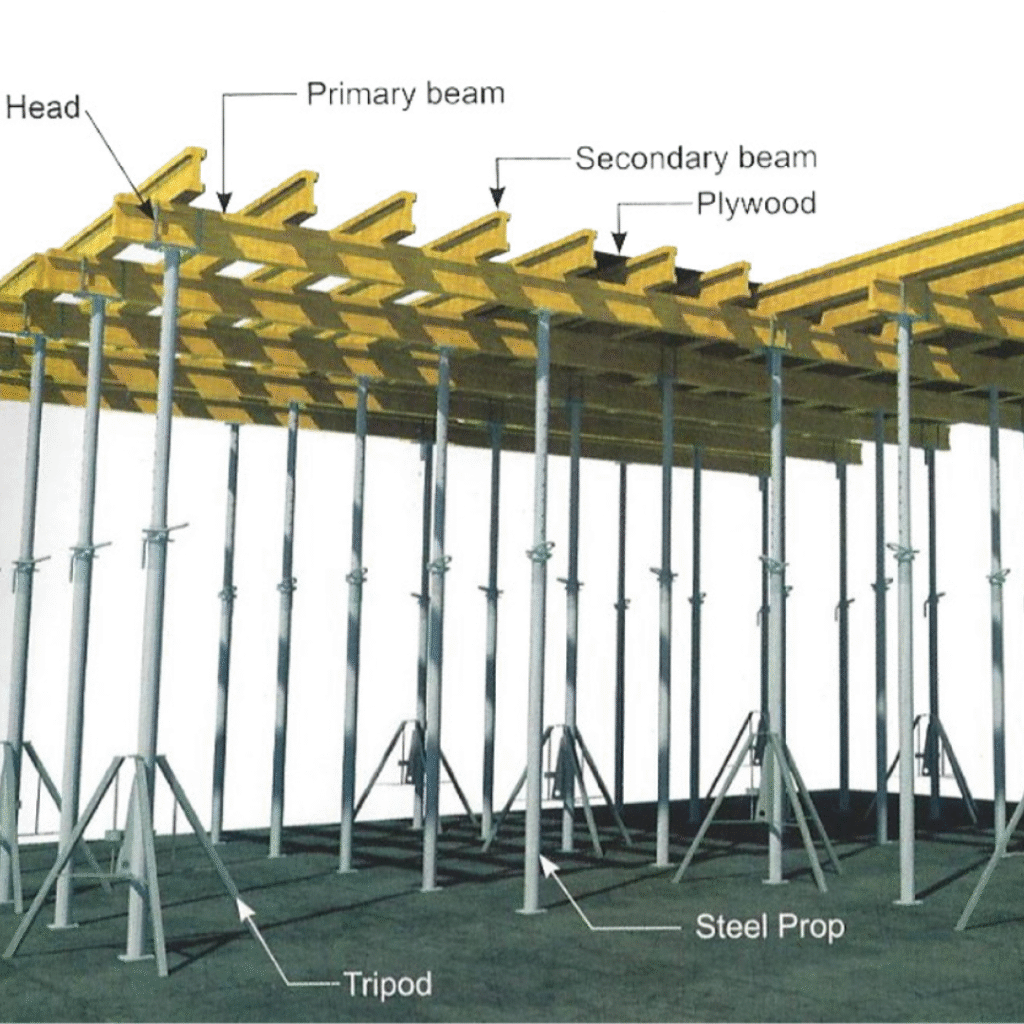As urban skylines continue to evolve with soaring skyscrapers and high-rise infrastructure, the demand for efficient, safe, and cost-effective construction methods is at an all-time high. One such revolutionary innovation that has transformed vertical construction is the Formwork Climbing System. This advanced engineering solution offers unparalleled speed, safety, and precision—making it an indispensable tool in modern construction projects.
At Bii Formtek, we don’t just supply construction materials; we provide engineered solutions that improve site productivity and structural quality. As a leading shuttering material supplier, we understand how essential climbing formwork systems are for efficient vertical construction. In this guest post, we’ll explore what formwork climbing systems are, how they work, their advantages, and why you should source them from trusted industry experts.
What Are Formwork Climbing Systems?
Formwork Climbing Systems are modular support structures designed to carry vertical and horizontal loads while enabling the construction of vertical elements such as cores, walls, and piers of high-rise buildings. These systems move upwards as construction progresses, allowing seamless and repetitive concrete casting at various levels.
Climbing formwork is generally classified into three types:
- Crane-Dependent Climbing Formwork (CCF): Moved using a crane between stages.
- Self-Climbing Formwork (SCF): Equipped with hydraulic systems that lift themselves without crane assistance.
- Guided Climbing Formwork (GCF): A hybrid with some crane dependency but guided on rails fixed to the structure.
Why Are Climbing Formwork Systems Crucial?
Climbing systems address key challenges faced in high-rise construction:
- Efficiency: They allow multiple construction cycles without rebuilding the formwork.
- Safety: Platforms provide secure working conditions for laborers at height.
- Accuracy: Ensures perfect alignment of wall structures across floors.
- Time-Saving: Fast setup and repositioning lead to reduced project timelines.
Whether it’s a commercial tower, a bridge pier, or a nuclear plant cooling tower, climbing formwork systems make the entire process faster and safer.
Components of a Climbing Formwork System
An effective formwork climbing system comprises various components, each contributing to the structure’s integrity and mobility:
- Form Panels: The surface that shapes the concrete.
- Working Platforms: Allow safe movement of workers and storage of materials.
- Climbing Rails or Tracks: Guide and support the vertical movement of the system.
- Hydraulic or Mechanical Jacks: Used for self-climbing systems.
- Anchoring Systems: Secure the formwork to the building during the climb.
These components must be designed with precise tolerances and durable materials, which is why working with an experienced shuttering material supplier is essential for quality assurance.
Advantages of Using Formwork Climbing Systems
- Enhanced Productivity: Reduces downtime between construction cycles.
- Labor Optimization: Requires fewer workers compared to traditional scaffolding systems.
- Minimized Crane Dependency: Especially in self-climbing variants, freeing up cranes for other tasks.
- Improved Structural Accuracy: Consistency across floors due to fixed alignment.
- Better Safety Compliance: Engineered platforms and built-in safety features ensure compliance with international safety standards.
- Long-Term Cost Savings: Though the initial investment may be higher, the long-term ROI is significantly better due to reduced labor and time costs.
Industries and Projects That Benefit from Climbing Systems
Formwork climbing systems are increasingly being used across various construction domains:
- Commercial High-Rises: Ideal for repetitive vertical casting in tall buildings.
- Infrastructure Projects: Flyovers, metro rail piers, and bridges benefit from precision and reduced manual intervention.
- Power Plants: For tall chimneys and cooling towers requiring symmetrical casting at great heights.
- Hydroelectric Dams: Ensures safety and uniformity in steep dam faces.
Choosing the Right Shuttering Material Supplier
The success of your climbing formwork implementation depends heavily on sourcing high-quality materials from a reliable shuttering material supplier. Here’s what to look for:
- Experience and Expertise: Choose suppliers who understand structural dynamics and formwork engineering.
- Customization Capabilities: No two projects are the same. A good supplier offers custom-fit solutions.
- Material Quality: Durable, weather-resistant, and lightweight materials are crucial.
- Compliance Certifications: Ensure materials meet ISO or BIS standards for safety and performance.
- After-Sales Support: Technical support and timely delivery ensure smooth project execution.
Why Choose Bii Formtek?
At Bii Formtek, we are pioneers in supplying cutting-edge construction materials that adhere to international standards. As a reputable shuttering material supplier, we bring value beyond products.
Our Offerings Include:
- High-Quality Formwork Systems: Including wall formwork, slab formwork, and modular systems.
- Climbing and Self-Climbing Systems: Engineered for vertical excellence.
- Customized Accessories: From anchors and clamps to push-pull props.
- Technical Consultation: To guide selection based on your structural and architectural requirements.
With a team of engineers and domain experts, we ensure that every component we deliver contributes to safer, faster, and more efficient building outcomes.
Installation and Operational Guidelines
To ensure the best outcomes, climbing formwork systems should be installed and operated under strict guidelines:
- Engineering Analysis: Structural loading must be calculated based on live and dead loads.
- Pre-Assembly Checks: Ensure all components are free from damage or deformation.
- On-Site Training: Workers must be trained on platform safety, hydraulic operations, and emergency protocols.
- Scheduled Maintenance: Regular checks of hydraulic systems, anchors, and fasteners enhance system longevity.
We at Bii Formtek offer technical assistance and detailed manuals for safe and efficient deployment of our climbing systems.
Future Trends in Climbing Formwork
With advancements in digital construction, formwork systems are becoming smarter and more adaptable. Some key trends include:
- Automation: Remote-controlled hydraulic systems and sensors for load monitoring.
- Modular Design: Allows quicker reconfiguration for various project needs.
- Sustainable Materials: Use of recyclable aluminum and fiber-reinforced plastics.
- Integration with BIM: Better planning and clash detection using Building Information Modeling.
By staying ahead of the curve, Bii Formtek continues to invest in R&D to deliver future-ready solutions.
Conclusion
The Formwork Climbing System is no longer a luxury in vertical construction—it’s a necessity. As projects get taller and timelines shorter, traditional methods just can’t keep up. Whether it’s a skyscraper in a metro city or an infrastructure mega-project, climbing formwork offers speed, safety, and structural integrity.
As a top-tier shuttering material supplier, Bii Formtek empowers builders and contractors with innovative solutions that raise the standard of construction. By choosing the right formwork partner, you ensure your project stands tall—both literally and in terms of quality.
Looking to elevate your next high-rise project?
Explore premium Formwork Climbing Systems and accessories at Bii Formtek today!







